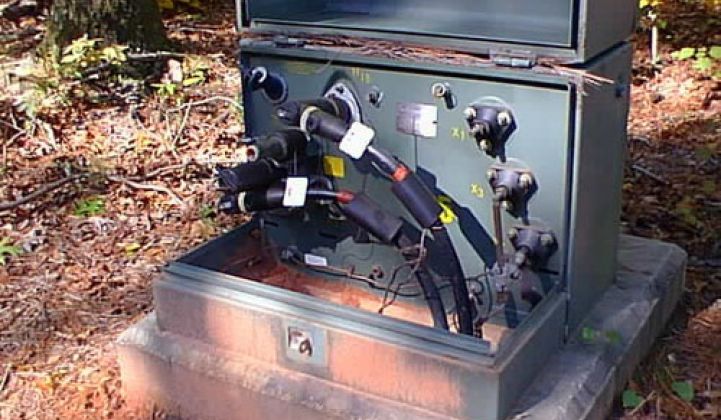On-Ramp Wireless has a long-range, low-power, high-penetration wireless technology that it promises can do a lot of things -- including connecting underground, or “vaulted,” grid devices that other cost-competitive wireless technologies can’t reach.
Now we’ve got a Department of Energy report that appears to backs up those claims. On Wednesday, On-Ramp announced that a DOE-funded pilot shows its technology can network lots of underground grid assets, and that this in turn can help improve a key utility outage metric: System Average Interruption Duration Index, or SAIDI.
It’s another sign of progress for On-Ramp, which in June raised $10.1 million of a planned $30 million round from Energy Technology Ventures, the joint venture of General Electric, NRG Energy and ConocoPhillips, bringing its total raised to date to about $47 million. The San Diego, Calif.-based startup is also getting ready to announce an “end-to-end AMI solution” linking smart meters from General Electric and others to its distribution grid networking platform, Jason Wilson, On-Ramp vice president of marketing, said in an interview.
As for the DOE project, it has been underway since late 2010, when On-Ramp won a $2.1 million grant to test the concept with partners Southern California Edison and San Diego Gas & Electric. On-Ramp installed its Ultra Link Processing communications chips in underground fault circuit indicators from Schweitzer Engineering Laboratories, as well as transformer monitors from GridSense, Wilson said.
Those are two types of many different distribution automation (DA) devices that utilities are starting to install on the neighborhood power grids that stretch from substations to end users. Distribution grids account for the majority of everyday power outages, but they tend to lack all but the most rudimentary sensor and control systems -- a problem that DA deployments are meant to solve.
But plenty of those distribution assets are underground, particularly in dense urban environments, though they can also emerge in the form of "pad-mount" transformers, or the green metal boxes that stick out of the ground along underground power line pathways. SDG&E, for example, has about 65 percent of its distribution grid below-ground, Wilson said.
The steel and concrete involved in "vaulting" such power grid devices can create problems for the radio mesh or cellular systems that are preferred as cost-effective alternatives for networking lots and lots of DA devices, however. On-Ramp is hoping its technology can deliver a low-cost alternative to leaving those assets without the benefits of smart grid connectivity.
In the case of On-Ramp’s trials with SCE and SDG&E, the partners were able to report a SAIDI score that was 10 percent higher than the target DOE has set for the industry to reach in 2016, according to Wednesday's announcement. For utilities that need to meet certain SAIDI scores for regulatory purposes, improvements like that could make investment in below-ground networking worthwhile.
On-Ramp’s technology promises connectivity at long range, as well as below-ground. In an earlier test with SDG&E, it linked meters and other devices across 4,000 square miles of territory using only 35 access points.
In the meantime, On-Ramp is in the process of releasing a full end-to-end smart meter solution to match its distribution automation capabilities, Wilson said. That work is building on several partnerships that have been underway for some time, including General Electric, which made an undisclosed investment in On-Ramp through its Ecomagination Challenge program last year.
Back in January, On-Ramp announced a partnership with ElectSolve, a meter data management software vendor with lots of smaller utility clients. As part of that, On-Ramp announced it was integrating with GE smart meters, and the two companies hope to make an On-Ramp-enabled GE meter generally available to the market later this year, Wilson said.
On-Ramp is also working on a project with Korea Telecom (KT) and meter company Fountain Springs to connect smart meters for South Korea’s Jeju Island smart grid test bed. That project has been up and running for about ten months.
On-Ramp’s technology is quite different from the mesh networks from companies like Silver Spring Networks, Trilliant, Itron, Landis+Gyr, Elster and others that now dominate North American smart meter deployments. In some ways, it bears more similarities to high-bandwidth, low-latency communications from the likes of Trilliant acquisition SkyPilot or from ABB acquisition Tropos Networks, though there are also many important technical distinctions.
On-Ramp’s ULP technology is also proprietary, which could limit its appeal to utilities that hope to build communications networks that can be forward-compatible with the newest developments in IPv6 networking.
But the most important measure for any utility communications technology remains, does it work or not? Wednesday’s announcement would seem to give On-Ramp’s underground connectivity capabilities a seal of approval from the DOE, at least in terms of the performance improvements it can yield.



